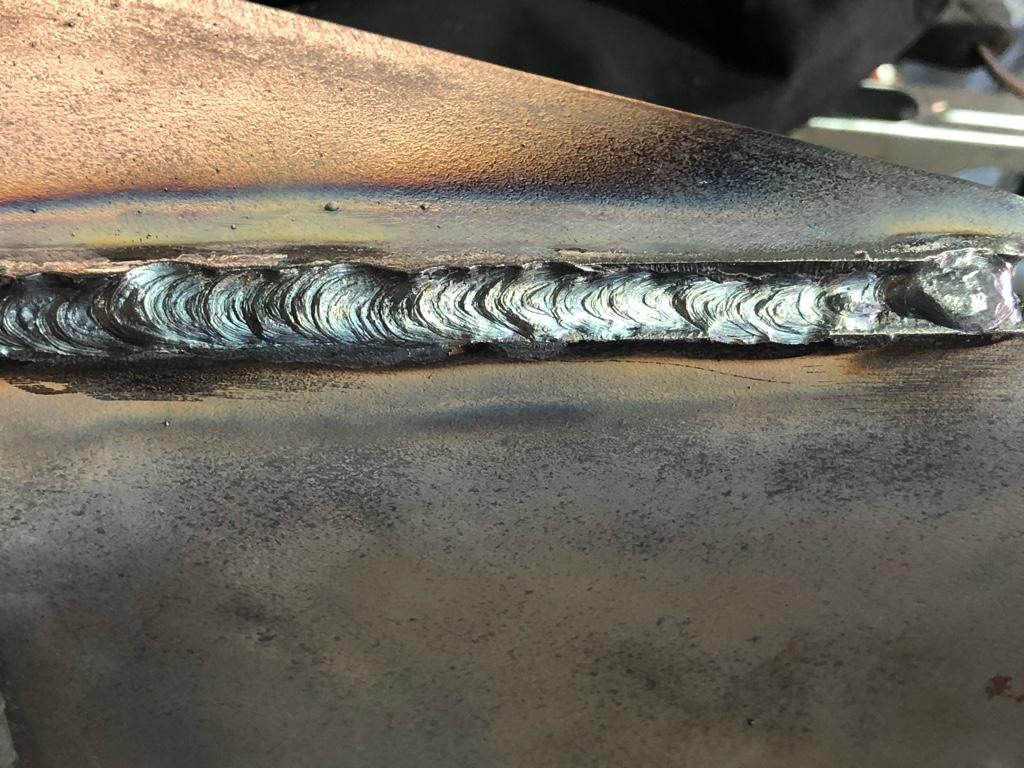Complete Guide to Preventing Weld Undercut: Tips and Techniques
Understanding the Causes and Solutions for Undercut Welding in Metal Fabrication Processes
In the world of steel manufacture procedures, the event of undercut welding postures a substantial obstacle that requires a thorough understanding of its reasons and sensible remedies. The detailed interaction of different aspects during welding operations can lead to this undesirable phenomenon, impacting the architectural honesty and general high quality of the welded joints - Preventing weld undercut. By dissecting the origin creates of undercut welding and exploring effective remedial steps, producers can raise the criterion of their workmanship and guarantee the production of remarkable metal elements
Usual Reasons of Undercut Welding
Often overlooked in steel manufacture, undercut welding occurs due to numerous factors that require careful attention and know-how to be successfully mitigated. One common source of undercut welding is excessive warmth input. When the warmth input is expensive, it can result in the melting and subsequent erosion of the base product along the edges of the weld joint, developing a groove or undercut. Furthermore, incorrect welding techniques, such as making use of the wrong welding angle or travel rate, can additionally add to damage development. Inadequate protecting gas protection is an additional key element that can cause undercutting. Insufficient gas coverage falls short to shield the weld pool sufficiently, leading to oxidation and undercut flaws. Moreover, the selection of welding parameters, such as voltage, existing, and cable feed speed, plays a considerable duty in the occurrence of undercut welding. Comprehending these usual causes is important for applying safety nets and guaranteeing high-grade welds in steel manufacture procedures.
Effect of Incorrect Welding Parameters
Unreliable welding criteria can considerably endanger the honesty and quality of welded joints in steel manufacture procedures. The impact of inaccurate welding specifications shows up in numerous ways, leading to architectural weaknesses and defects in the welded elements. Thorough focus to welding parameters is critical to make sure the manufacturing of high-grade welds with the desired mechanical homes and structural stability.
Impact of Improper Lantern Angle
Incorrect lantern angle in welding procedures can substantially influence the top quality and honesty of the last weld joints in steel construction procedures. The torch angle plays a critical duty in determining the heat input and circulation throughout welding. When the lantern angle is inaccurate, problems such as undercutting can occur. Undercutting is a common welding defect where a groove creates along the weld toe, damaging the joint and endangering its architectural stability.
A torch angle that is too high can cause inadequate penetration, insufficient blend, and boosted spatter. On the other hand, a lantern angle that is as well shallow can result in too much penetration, burn-through, and distortion of the base material. Preventing weld undercut. Correct torch angle is important for ensuring regular weld high quality, strength, and look
To stop undercutting and various other problems triggered by inappropriate torch angles, welders have to be trained to maintain the right torch angle throughout the welding procedure. Regular surveillance and modification of lantern angles during welding can aid accomplish audio welds with very little defects.
Function of Inadequate Welding Techniques

An additional element of insufficient welding methods is incorrect weld preparation. Inadequate cleansing of the base steels, wrong joint style, or inadequate edge preparation can all add to damage welding. Inadequate securing gas insurance coverage or utilizing the wrong kind of gas can result in insufficient fusion and the development of undercut flaws.
To address the duty of insufficient welding techniques in steel construction processes, it is important to give detailed training for welders. Proper education and learning on welding specifications, joint preparation, and securing gas choice can help stop undercut welding and guarantee high-quality welds in steel fabrication tasks.
Efficient Solutions for Undercut Welding
Addressing undercut welding in metal fabrication needs implementing efficient solutions to boost weld quality and architectural integrity. Among the primary options to combat undercut is to change welding parameters such as voltage, present, and take a trip speed to make sure proper warm input and blend. By fine-tuning these settings, welders can stop excessive melting of the base metal and filler product, reducing the probability of undercut development.
Additionally, proper joint prep work is crucial in avoiding undercut. Making certain clean base metal surface areas cost-free of contaminants you can try here and utilizing the ideal bevel angle can help promote much better weld infiltration and reduce the risk of undercut - Preventing More Bonuses weld undercut. Utilizing appropriate welding methods, such as weaving or oscillating the lantern, can also help in dispersing warmth equally and filling the weld joint sufficiently, lessening the opportunity of undercut defects
Furthermore, selecting the appropriate welding consumables, consisting of electrodes and filler steels, is crucial in mitigating undercut. Using materials with appropriate chemical compositions and mechanical residential properties can add to attaining audio welds with marginal undercut. Normal examination and quality assurance actions need to additionally be applied to identify and resolve undercut concerns without delay, making certain the total honesty of produced steel elements.

Conclusion
In conclusion, understanding the reasons and options for undercut welding in steel construction processes is crucial for attaining high-grade welds. By resolving here typical causes such as incorrect welding criteria, incorrect torch angle, and inadequate welding strategies, welders can stop undercutting and ensure solid, long lasting welds. It is necessary to focus on these variables and carry out effective solutions to boost the general welding procedure and end product top quality.
